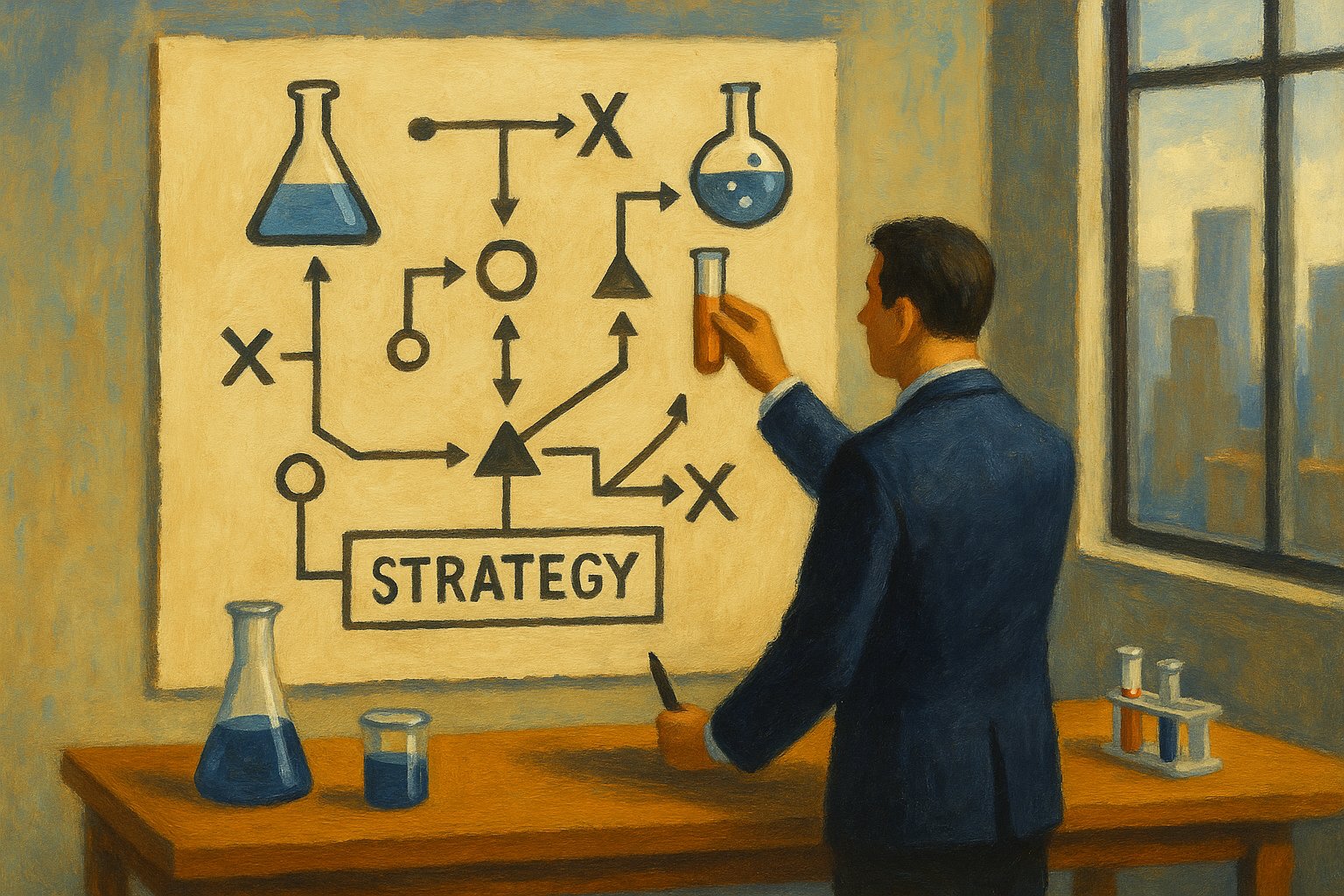It took the telephone 75 years to reach 1 million users. Television did it in about 13 years. Netflix reached the same milestone in just 3.5 years—and ChatGPT did it in only 5 days.
We are living in a world where the pace of change and the speed at which information spreads are accelerating exponentially. Yet many companies still treat strategy as a static document—designed solely for execution. In boardrooms across the world, these documents are often presented with great fanfare—slick slide decks, ambitious goals, and a roadmap charting the path to a brighter future. But what happens once the applause fades and execution begins? For the vast majority of organizations, not much.
Research shows that only a small fraction of items laid out in any given strategic plan ever reach full implementation. Leadership teams, often swept up in the day-to-day whirlwind, spend shockingly little time on strategic thinking. Meanwhile, as many as 95% of employees remain in the dark about their company’s strategy. This disconnect results not only in missed opportunities and reactive decision-making but in a growing perception that strategy itself is a futile or ceremonial exercise.
In addition, this crisis of strategy couldn’t come at a worse time.
We’re living in an age of unprecedented complexity. The rise of generative AI is reshaping industries overnight. Climate change and the energy transition are upending global business models. Supply chains, once stable and predictable, are being rewired in real-time. In such a volatile world, the traditional view of strategy—as a fixed roadmap or a top-down implementation plan—feels less like guidance and more like a liability.
It’s time for a paradigm shift. If organizations are to survive and thrive in this new era, they must stop treating strategy as a rigid blueprint and start treating it as what it truly needs to be: a flexible, continuously evolving tool for navigating uncertainty.
Strategy as a Living Framework
At its core, strategy should be the articulation of an organization’s most critical assumptions about the future—and a framework for testing, adjusting, and aligning around those assumptions. This demands an end to the outdated idea of strategy as a one-off exercise performed annually or in response to major disruption. Instead, strategy must become an ongoing conversation between leadership, operations, markets, and customers.
This re-imagined approach mirrors what has already become the norm at the tactical level. Over the past decade, front-line teams have embraced agile methodologies, customer-centric design, and evidence-based iteration. Yet the strategic layer in many organizations remains frozen in time, relying on linear, top-down models that ignore the messy, fast-changing realities of today’s business environment.
Bringing these layers into sync isn’t just logical—it’s essential. A dynamic strategy process can harness the insights emerging daily from the operational trenches and turn them into strategic advantage. It creates a shared language and a feedback loop, allowing the organization to align actions with long-term goals while remaining responsive to new data and emerging trends.
The End of the Illusion
Holding onto strategy as a detailed implementation plan is comforting—but illusory. No roadmap can account for every twist in the road ahead as no business plan survives first contact with a customer. What organizations need instead is a compass: a flexible, resilient way of thinking that helps them orient themselves, even as conditions shift.
This doesn’t mean abandoning planning altogether. It means replacing static, brittle plans with living strategies that evolve with the environment. Replacing them with feedback loops that connect teams on the ground to the boardroom, where strategy is created, and ensuring these loops are supported by strong governance. However, this means equipping leaders with the tools to make better decisions not because they have all the answers, but because they’re constantly learning, adjusting, and aligning in real time.
From Command to Collaboration
The new role of strategy requires a cultural shift, amongst other things. Leaders must stop treating strategy as a sacred text delivered from the top and start inviting collaboration across functions and hierarchies for its development and constant update. It requires transparency, humility, and a willingness to listen to signals from outside the boardroom.
By considering strategy’s new role as a dynamic alignment instrument—rather than a command-and-control tool—organizations can bridge the gap between vision and execution. They can turn their strategy function from a source of frustration into a catalyst for innovation and adaptability.
In a world where change happens faster than ever before, companies can no longer afford to treat strategy as a static document. It must be a living, breathing framework—shaped by learning, grounded in collaboration, and built for continuous adaptation. Only then can organizations position themselves not just to survive disruption, but to lead through it.
This article was originally published on the OUTCOME Blog




